Google Play Store is a pivotal platform for businesses to connect with a vast audience of Android users. With Android powering over 70% of global smartphones, the Play Store’s impact on app visibility and user engagement is undeniable. That’s why businesses need to understand Google Play Store statistics to craft effective mobile strategies.
From understanding how many apps on Google Play to Google Play Store app download statistics, you need to understand important insights about this app store before launching your application. Having billions of Android users worldwide, this app store provides a massive opportunity to reach customers, drive engagement, and generate revenue.
By 2025, Google’s Play Store stands as a titan in the mobile app ecosystem. In this blog, we’ll explore the latest Google Play Store statistics – from how many apps it hosts and how fast new ones are arriving, to how users are downloading, rating, and spending on apps. So, let’s dive deep:
Table of Contents
Key Google Play Store Statistics
Understanding the numbers behind the Google Play Store is important for making informed business decisions in 2025. Here are some impactful Google Play Store app statistics every business should know before building the application:
1. Total Apps on Google Play Store
Let’s start understanding the statistics by looking at how many apps does Google have. It is one of the most trusted platforms, which is used by millions of users daily. Business of Apps stated that there are currently 3.3 million Android applications available on the Google Play Store. This data shows that this app store is on its way to achieving success with the highest number of available applications.
2. Total Apps Released Monthly And Weekly
As per Pitangent, approximately 41,000 new apps were published on the Google Play Store. These numbers highlight the vibrant activity within the Android developer community, as businesses aspire to meet the evolving demand of users. 42matters reported that over 6,420 were added weekly to the platform. This continuous growth underscores continuous innovation and the competitive nature of the application on Play Store.
3. Mobile App Downloads
Android is the most used operating system around the world and more users are shifting towards this mobile operating system. With a wider market reach, the Google Play Store download statistics are growing higher. Statista projected that the app downloads on the Google Play Store are expected to reach 143 billion by 2026. This is 31% perfect growth as compared to 111 billion app downloads in 2021. However, the exact data is not available, but Statista reported that there will be 129 billion app downloads in 2024.

4. Total Apps With 4 or Above Rating
Google Play Store is filled with high-performing and cutting-edge applications that have won customer trust and good ratings. Most of the applications have got higher ratings, and they have earned success, user trust, and higher revenue. According to Industry reports, more than 230,000 apps have ratings of 4.0 stars or higher, and 109,473 apps are rated above 4.5 stars. Applications with poor ratings face consequences on the App Store. So, developers need to build high-class apps to be a part of Google Play Store statistics.
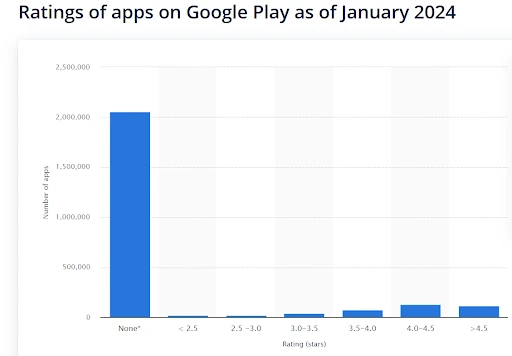
5. Estimate Spending on Google Play Store
Based on available data, consumer spending on Google Play includes in-app purchases, subscriptions, and premium apps, and it has been growing steadily. In 2024, spending was forecasted to reach around $55.5 billion, which is high from $50.5 billion in 2023. Let’s assume a conservative growth rate of 10-12% annually, spending in 2025 could range between $60 billion and $65 billion globally. Gaming apps are expected to contribute heavily.
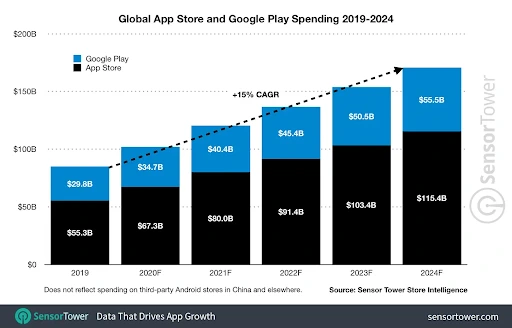
6. Price Distribution of Apps
Not all applications are free on the Google Play Store. The app store hosts a range of paid applications with prices from a few cents to hundreds of dollars. As of January 2025, the majority of paid apps were priced at the low end. Over 20,000 applications fell into the under $1 category, another 17,000+ apps were priced between $1-$2 category, and approximately 1,263 apps were priced around the $9-$10 category. Some apps are priced above $10 (highest paid android apps), but they are only in the hundreds. The key takeaway is that paid applications on the Google Play Store are generally inexpensive.
7. Prevalence of Free Apps
One of the defining characteristics of Google Play is the dominance of free-to-download apps. An overwhelming ~97% of Android apps on Google Play are free to install. That leaves only about 3% of apps that require an upfront payment (paid apps). Throughout the history of the Play Store, the number of free apps has consistently far outstripped paid apps.
This prevalence of free apps underscores the industry’s shift toward the freemium model, where developers give the app itself away and monetize via other means (in-app purchases, subscriptions, or ads). Free apps have become so dominant that many users now expect most services to be free at the point of download. On Apple’s App Store, we see a similar pattern: roughly 95%+ of iOS apps are free as well. The strategy is clear on both platforms – remove the barrier to entry (price tag) to attract users, then earn revenue through engagement. Before launching the free app, taking a look at the Google Play billing system for Android apps is essential.
8. Market of Paid Apps
Understanding the market for paid apps is important to complete the information about Google Play Store Statistics. The number of paid apps is less than free applications because users want free applications on the platform. Currently, about 3% of apps on the Google Play Store are paid apps that require purchase from the users. If you’re an Android user, think about your own device – you probably have only a handful of paid apps installed, if any. Many users have zero. If someone has more than a couple of paid apps on their phone, they’re in a minority group of power-users willing to pay for apps. Paid apps should have all the services and tools, like the Google Partner Setup App can make Android devices fully integrated with Google services.
9. Google Play Store App Availability
The Google Play Store’s availability refers not just to the number of apps (which we covered earlier) but also to its presence across different categories and needs. App availability can be boosted after going through the app submission guidelines. One way to appreciate the breadth of Google Play is to look at the breakdown by category. Broadly, apps on Google Play can be divided into gaming vs. non-gaming. Out of the millions of apps, roughly 500,000 are games, and the rest (over 3.2 million) are non-gaming apps of all other categories. (Source)
10. Leading Applications On The App Store
It’s time to explore Google Play Store statistics based on the leading applications on the app store. As of early 2024, Facebook secured the #1 position as the most downloaded app globally on Google Play, with around 52 million downloads in just the month of March 2024. Hot on its heels was Instagram at #2, with approximately 50 million downloads in the same period.
Facebook and WhatsApp (also owned by Meta) were close contenders, each racking up hundreds of millions of downloads annually. Other perennial chart-toppers include apps like TikTok, messaging apps (WhatsApp, Facebook Messenger), and utility apps from Google (such as Gmail or Google Maps, which often come pre-installed on many devices but still record high download counts for updates). Businesses can hire dedicated mobile app developers to create applications that can lead the market.
11. Google Play Store Users Globally
The potential audience for mobile apps is gigantic and still growing. By 2025, the global number of mobile users is anticipated to reach about 7.49 billion people. (Source) That’s nearly the entire world population engaging with mobile devices in some form. This growth is driven largely by increasing smartphone adoption in developing regions, where cheaper Android devices and improving internet access are bringing millions of new users online each year.
As of 2025, there are over 3.3 billion active Android users worldwide. In regions like Asia, Africa, and Latin America, Android is often the default choice – in countries such as India, Brazil, and Indonesia, Android commands over 85% of the smartphone market. This gives Google Play an enormous (and expanding) user base to serve. To make your app successful, it’s essential to follow the secret tips to make your app a “Hot Seller” on Google Play Store.
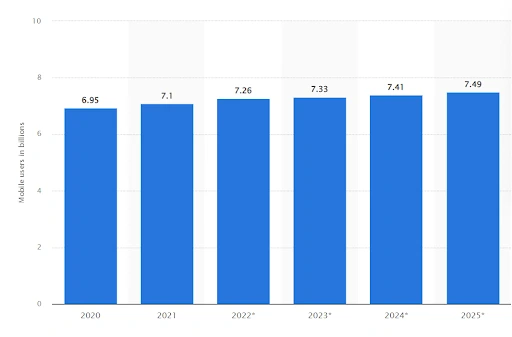
12. Revenue From In-App Purchases
How do free apps make money? The answer, overwhelmingly, is through in-app purchases (IAP) and other in-app monetization strategies. The “freemium” model (free download, paid extras) is king. In fact, a staggering 98% of Google Play’s revenue comes from free apps – or more precisely, from the in-app purchases and ads within those free apps. (Source)
In-app purchases can include anything from buying extra lives in a game, unlocking premium features in a utility app, subscribing to a music streaming service, or even tipping content creators. The key point is that the app economy has shifted away from one-time paid app sales. Consumers have shown they prefer free entry, and developers have optimized monetization to happen within the app. This is why freemium apps dominate earnings – 98% is virtually everything. Any new app aiming to make money on Google Play typically builds an IAP or ad-based revenue model from the start.
13. Top Apps By Country
The top three categories to find the top applications are: Free, Paid, and Grossing. Let’s explore the country-wise list of top applications.
| Country | Free | Paid | Grossing |
| United States | ChatGPT | Hotschedules | Google One |
| United Kingdom | ChatGPT | Driving Theory Test 4 | Google One |
| Canada | ChatGPT | Threema | Google One |
| India | JioHotstar | H4X Macro | Google One |
| UAE | Temu | Gamebooster | TikTok |
| Australia | Max | Threema | Google One |
(Source: AppFollow)
Final Thoughts
The Google Play Store will likely not be about explosive growth in sheer numbers, but rather about refinement and innovation. Trends point toward a more mature, quality-driven app ecosystem, where success comes from retaining users and expanding into new markets and technologies.
The app world is continuously shifting, but one thing is certain: mobile apps are here to stay, touching almost every aspect of our lives around the globe. RipenApps, a leading Android mobile app development company, can help you build advanced and cutting-edge mobile applications. Our experts can help you achieve success on the Google Play Store with years of experience and expertise.
FAQs
Q1. Why are Google Play Store statistics important for businesses in 2025?
Businesses should be aware of Google Play statistics to make data-driven decisions about app development, marketing strategies, monetization models, and user engagement by offering insights into market trends and user behavior.
Q2. Which categories are the most popular in 2025?
Gaming, social media, entertainment, and productivity are some important categories that are top-performing in terms of downloads and revenue.
Q3. How much does it cost to develop an Android app?
The cost to develop an Android app can range from $10,000 to $500,000 or more, depending on factors like complexity, development time, features, design, the team’s location, etc.
Q4. What amount does an Android app make with 1 million downloads?
An Android app with 1 million downloads can potentially earn anywhere from $1,000 to $3,000 per day, and approximately $100,000 per month. However, the earning depends on factors like user engagement and monetization strategy.

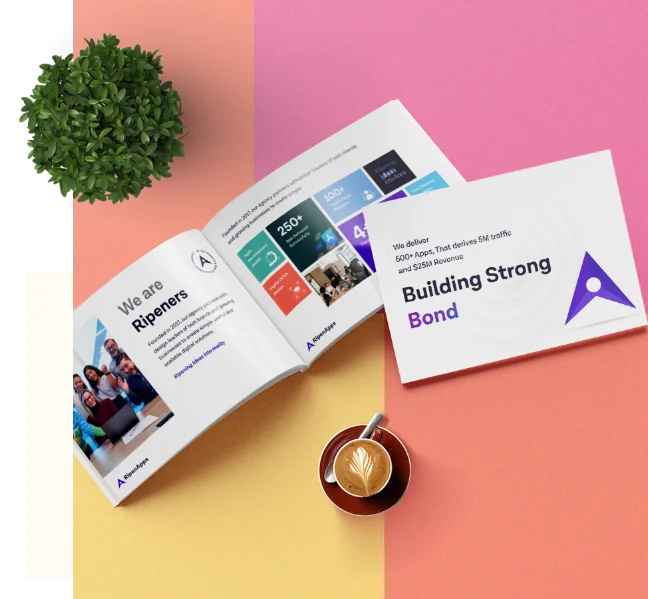
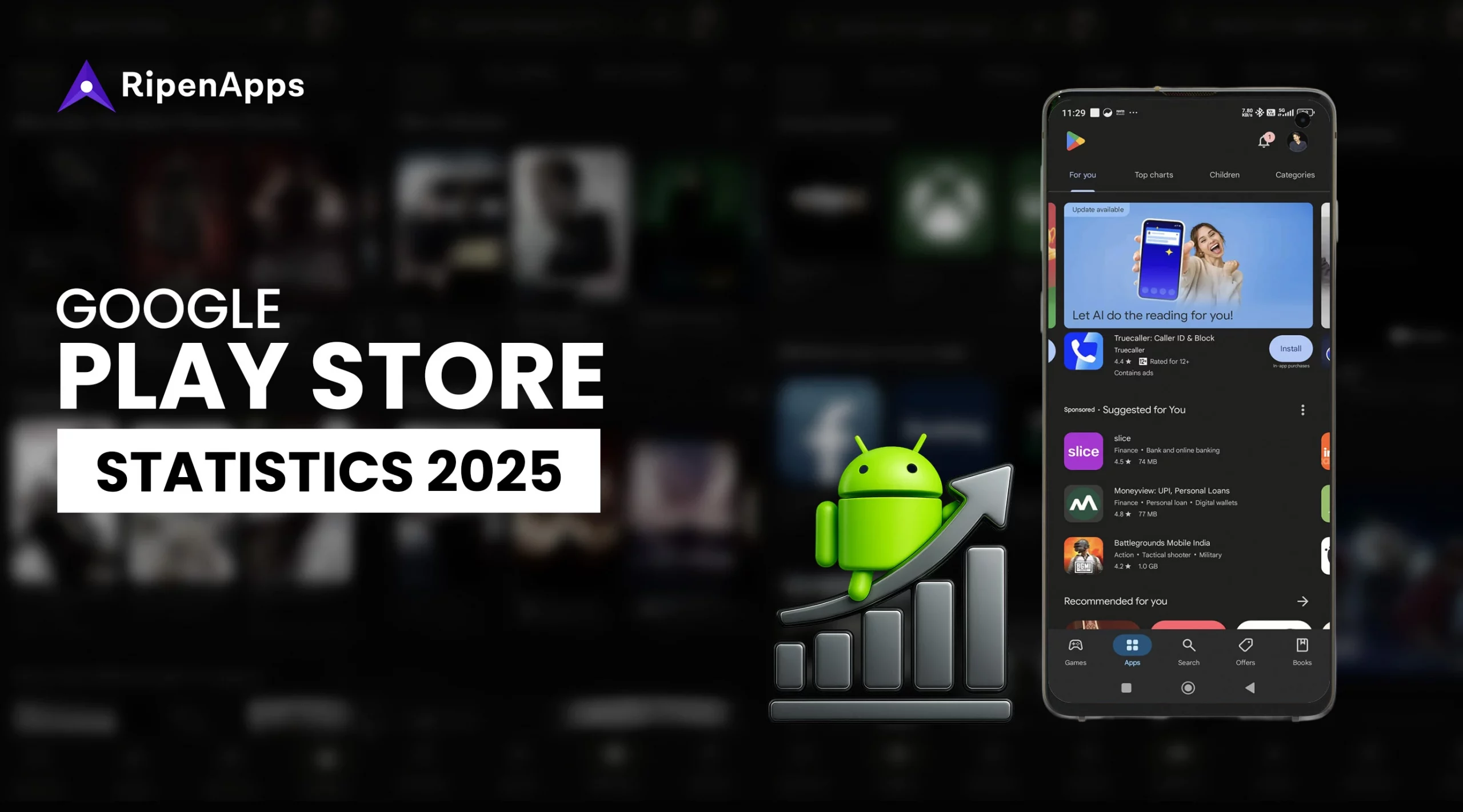




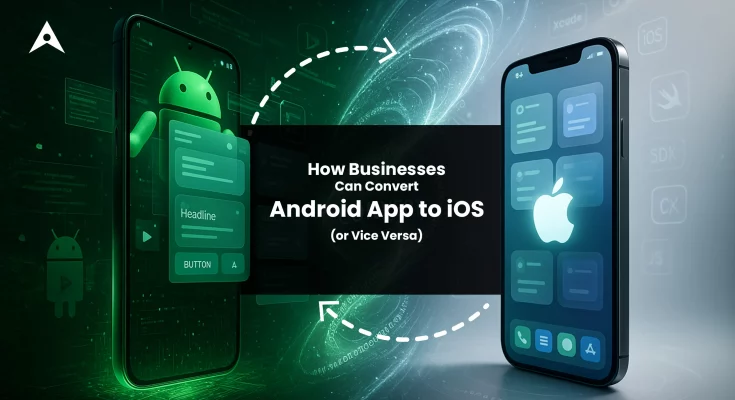

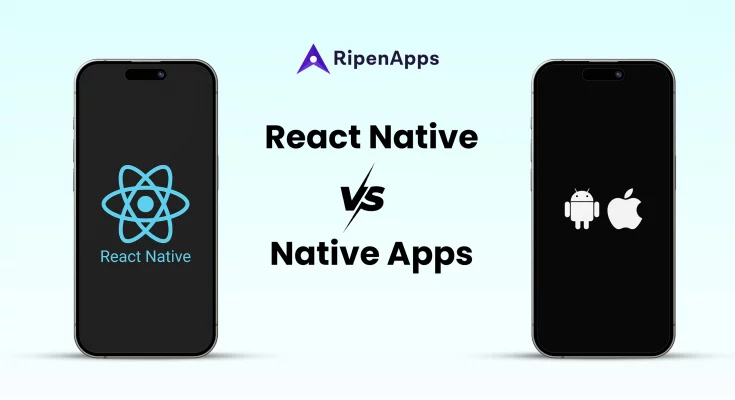
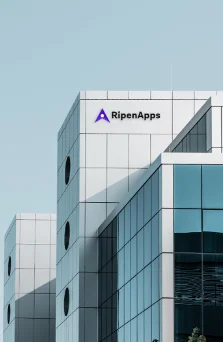
 India
India USA
USA Australia
Australia Canada
Canada UK
UK UAE
UAE
